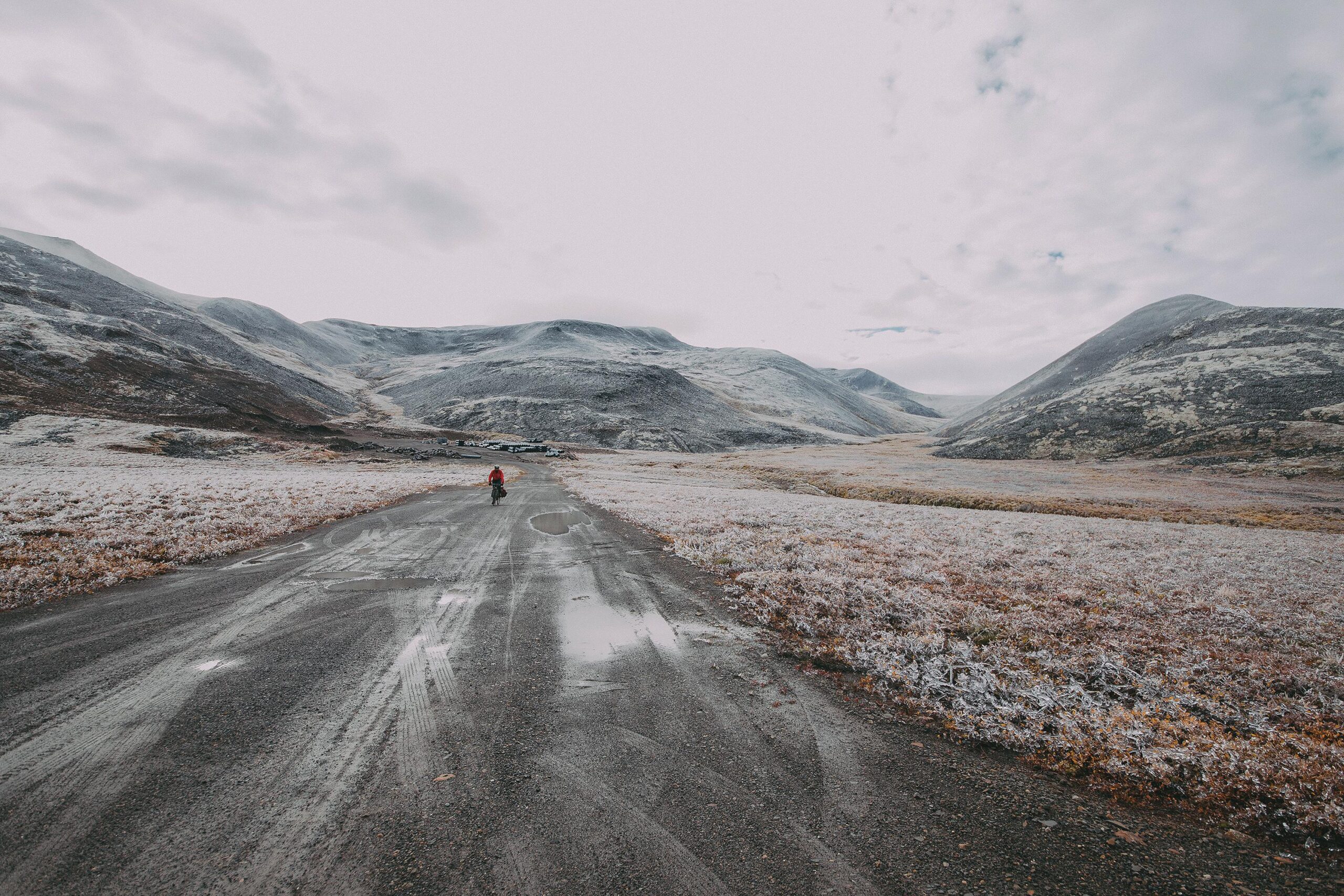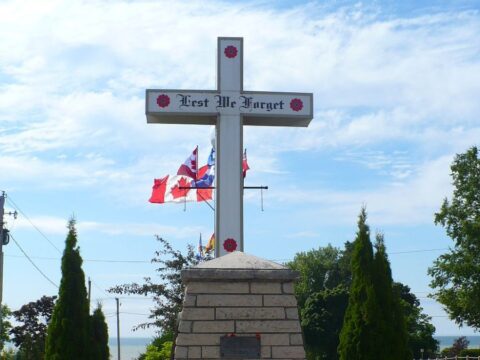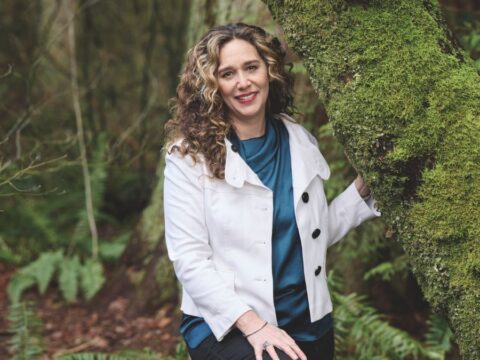Between May and early October this year, I cycled 15,000 kilometres across Canada from the Atlantic to the Arctic to the Pacific oceans. Alongside fellow photographer Asad Chishti, I traversed the rocky coastline of Newfoundland’s Avalon Peninsula, the headwaters of the Great Lakes, the wild passes of the northern Rockies and the lowlands of the Arctic tundra. The purpose of our journey was to discover and document the country’s lesser-heard stories and histories to add a counterweight to the celebratory narrative of Canada’s 150th anniversary of Confederation. Through photojournalism, conversations and independent research, I had my eyes opened to realities within Canada that I had never before considered, nuances within historical events that I had never fully understood.
As the days and kilometres passed, I gradually learned two powerful lessons. First, I learned that we are connected to the past. The land claim and self-government agreements of Carcross/Tagish First Nation in 2006, for example, drew on the leadership of Yukon First Nation chiefs in 1973 and the centuries of Indigenous resistance to colonization before them. And second, I learned that we are connected to each other. I met a fisherman in Nova Scotia and a farmer in Saskatchewan who both feared losing their homes to climate change. I met an oil worker in Alberta and an activist in British Columbia who were both committed first and foremost to caring for their families. Common threads like these ran through each of the stories I heard across Canada.
You may unsubscribe from any of our newsletters at any time.
So, we’re a diverse country. Our history is complex. Moving toward a more just and compassionate future is challenging. If I can offer one piece of advice, however, one simple reflection after five months on Canada’s long, worn roads, it is this: Start with connection. Connect to your neighbour, and reach out to the stranger. Connect to our shared past, and commit to our future. As this year draws to a close, let us set our sights firmly on the next 150 years. Together.

St. John’s, N.L.
Irma Gerd strikes a pose in the doorway of St. Michael’s Printshop in St. John’s. Two hours earlier, I’d met Jason Wells, a young man wearing a David Bowie T-shirt, at the studio. As he put on his makeup, he shared stories about his roots as a drag artist, from dressing up as a kid to performing in the nightclubs of Toronto. Suddenly the transformation was complete, and Jason was gone. In his place was Irma, the drag queen, her presence as bold and uncompromising as her mascara.

Lennox Island, P.E.I.
Gilbert Sark’s tattoos speak volumes. He took up the drum at age 13 and today is the traditional drumkeeper for the Mi’kmaq group Hey Cuzzins. “In caring for the drum, you have to live a certain lifestyle,” he says. “No drinking, no drugs. . . . It’s a lifestyle not about self; it’s about everybody else.” He brings the same philosophy to his role as community planner for the Lennox Island First Nation, which is experiencing some of the most destabilizing effects of climate change in all of Canada. Describing the uncertainty brought by rising sea levels and eroding coastlines, Sark is resolute. “I’m hopeful that our youth are going to pick up the reins,” he says. “I’m always hopeful.”

Tignish, P.E.I.
Illuminated by the rising sun, Simon Doucette measures the live catch from the lobster traps. He throws the smallest lobsters and the biggest females back into the water, part of the sustainable management practices of Fisheries and Oceans Canada. Over 11 hours, we gather the day’s catch as waves rock under our feet and seabirds cut the air above.

Boiestown, N.B.
The tranquility of the sunset is disturbed only by the relentless buzzing of mosquitos above the early summer grass. I snap the photo and then race back to the safety of the tent.

Percé, Que.
I meet artisan Pascal Riopel in his workshop near Percé at the eastern tip of the Gaspé Peninsula. He tells me that the building had once been the Maison du pêcheur, a gathering place and refuge for the Québécois youth counterculture of the late 1960s. Members of the Front de libération du Québec (FLQ) spent their summers here, he says, sharing ideas and discussing their vision for Quebec. It was a place for dreamers and idealists, a place that feels somehow connected to, yet distant from, the militant action of the FLQ during the 1970 October Crisis in Montreal, which culminated in the murder of provincial cabinet minister Pierre Laporte.

Edmonton
A dancing Chinese lion weaves its way through the crowd at the Edmonton Heritage Festival, a three-day celebration of Canadian multiculturalism. Each year, hundreds of thousands of visitors flock to the park to sample various cuisines and watch traditional performances on outdoor stages. Surrounded by so many cultures being shared with such sincerity and spirit, I wonder if a festival like this could happen anywhere else in the world.

Ottawa
Shaylynn Marsden, a member of the Beausoleil First Nation, stands in the rain outside the Reoccupation tipi on Parliament Hill on June 29, part of a demonstration led by Indigenous youth seeking to challenge the colonial narrative of Canada 150 festivities. As we talk, she traces colonization to residential schools and the intergenerational trauma that her family and community have endured. Tears blur my vision, but her eyes are clear and her voice is steady. “It ends with me,” she says. “I broke the cycle.”

Dawson Creek, B.C.
A bronco rider launches himself from the bucking horse as a pickup cowboy (in black) swoops in to grab him at the Dawson Creek Exhibition & Stampede. I hear the heaving breath of the horses and feel the ground shake with the pounding of hooves. I smell the leather of the saddles and chaps. Within seconds, the rider drops to the ground and stands tall, decades of rodeo tradition pumping through his muscles.

Tuktoyaktuk, N.W.T.
On the edge of the Arctic Ocean, stories intersect like driftwood on a beach. In the late 19th century, Tuktoyaktuk was a refuge for the survivors of the epidemic-decimated Inuvialuit communities of the Mackenzie Delta. In 1972, three Indigenous boys headed there after running away from residential school in Inuvik, N.W.T., about 130 kilometres away; two of the boys never made it. Today, the hamlet is one of the places in Canada seeing the most rapid consequences of climate change. Still, it remains a place of abundance, with every family in the community harvesting food from the land.

Salt Spring Island, B.C.
I ask Galveston, 9, what he would say to a political leader. “I’d say to not allow any pipelines, first of all. And then put more solar-panel yard thingies in, and make mills that put carbon in the air shut down.” In his words, I hear the voice of a generation that is aware and unafraid, a generation with the solutions in its hands and a vision for its future.

Inuvik, N.W.T.
The northern lights dance above Inuvik at 4:30 in the morning. The rivers of light grow into a strong band across the southern sky and then dissipate into the blue. After an hour, I return to the tent and zip my sleeping bag above my head, covering my eyes to catch a few more hours of sleep before dawn.
This story first appeared in The Observer’s December 2017 issue with the title “A Canadian pilgrimage.”















